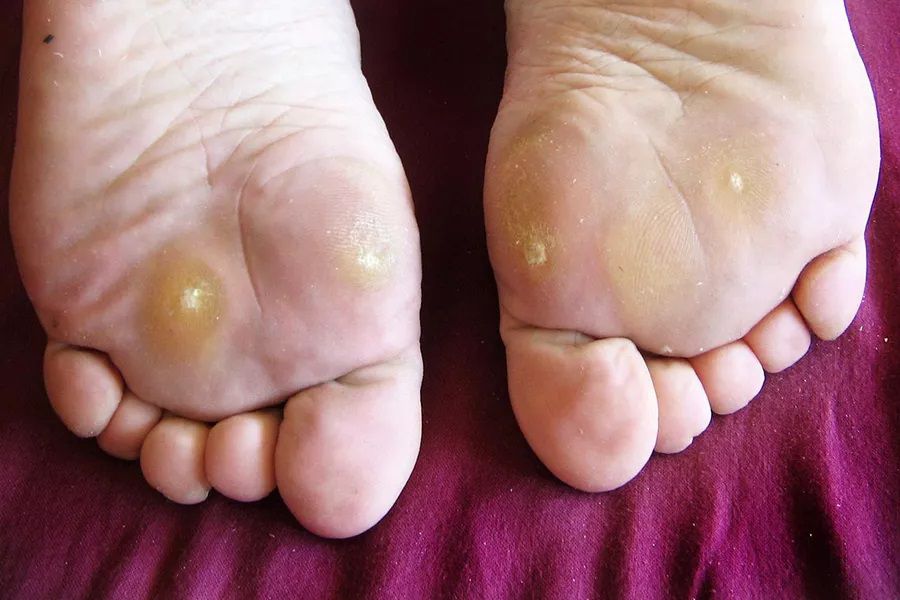Plantar Wart Treatment
Plantar warts, also known as verrucae plantaris, are a common skin condition caused by the human papillomavirus (HPV).
They typically develop on the soles of the feet, where the pressure from walking and standing can cause these lesions to appear.

Pain
There is pain at the site of the lesion. Pain when squeeze or touch the area
White grainy Cauliflower appearance
Has a grainy white/yellow cauliflower appearance
black dots
Small little black dots present on the lesion - these are blood vessels
Plantar warts, also known as verrucae plantaris, are a common skin condition caused by the human papillomavirus (HPV).
They typically develop on the soles of the feet, where the pressure from walking and standing can cause these lesions to appear.
Here are some key information about plantar warts:
1. Causes:
Plantar warts are caused by HPV, which enters the body through small cuts, abrasions, or weak spots on the skin of the feet. Once the
virus enters the skin, it can take several weeks or even months for the wart to become visible.
2. Appearance:
Plantar warts usually have a rough, grainy texture and may be surrounded by hardened skin. They are often flat and may have tiny black dots in the center, which are clotted blood vessels. The warts can vary in size, ranging from a few millimeters to more than a centimeter in diameter.
3. Transmission:
Plantar warts are contagious and can spread through direct contact with an infected surface or by walking barefoot in shared public areas like swimming pools, locker rooms, and showers. The virus can also be transmitted indirectly through objects that have come into contact with an infected person's foot.
4. Symptoms:
In addition to their appearance, plantar warts can cause discomfort or pain, especially when walking or standing. This is because the pressure applied to the warts pushes them inward, causing them to grow deeper into the skin.
5. Treatment:
Most plantar warts are harmless and may go away on their own over time. However, some warts can be persistent and may require treatment. Common treatments include over-the-counter topical medications containing salicylic acid or cryotherapy (freezing the wart with liquid nitrogen). For more stubborn warts, our Podiatrist will use stronger acids, laser therapy, or surgical removal.
6. Prevention:
To prevent plantar warts, it is essential to practice good foot hygiene. Avoid walking barefoot in public areas where the virus may be present. Keep your feet dry and clean, especially after exercising or spending time in moist environments. If you have a plantar wart, try to avoid touching or scratching it to prevent spreading the virus to other areas of your feet or to other people.
It is worth noting that some skin conditions can mimic plantar warts, such as calluses or corns. If you are unsure about the nature of a
growth on your foot, it's essential to consult our Podiatrist who can provide an accurate diagnosis and appropriate treatment.




